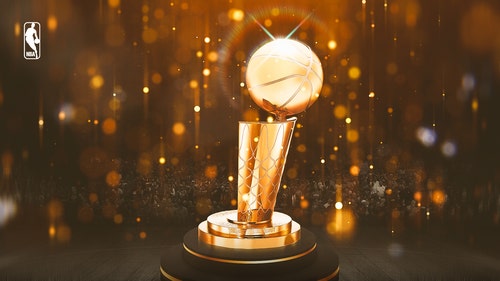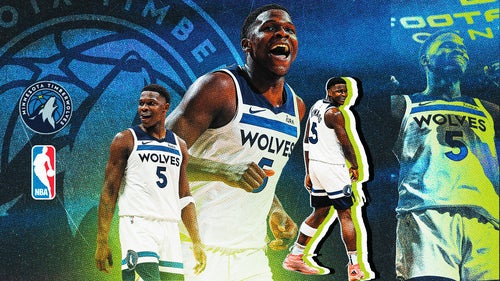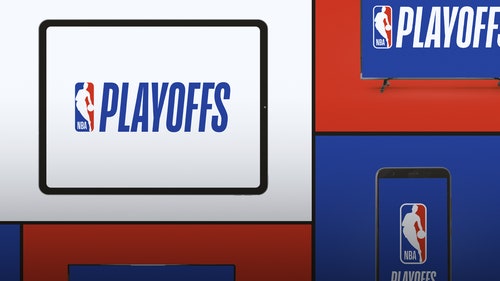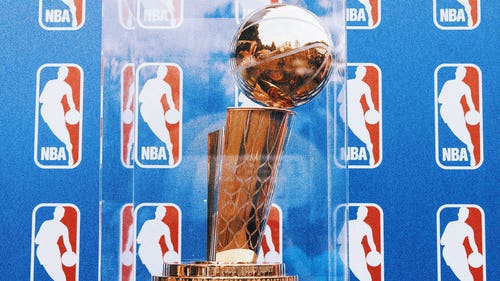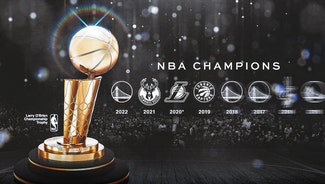
NBA: Ranking The Young Stars
The Timberwolves boast a trio of young stars in Zach LaVine, Andrew Wiggins, and Karl Anthony-Towns. Mandatory Credit: Mark J. Rebilas-USA TODAY Sports
There is no shortage of young talent in the NBA. But moving forward, which budding superstar will have the brightest future in the league?
Before we go any further, let’s take a step back to marvel at the future NBA superstars that are making their names known each and every night.
There’s Kristaps Porzingis, Joel Embiid, Karl Anthony-Towns, Andrew Wiggins, Giannis Antetokounmpo, Jabari Parker, and plenty of other names that are becoming stars both on and off the court.
The tricky task for fans and analysts is figuring out how to properly evaluate and rank these young players. Well, that’s exactly what I’m going to (cautiously) attempt to do now.
Each young star has shown tremendous potential in their short careers, but there are concerns surrounding all of them that must be considered.
Also, it is important to note that these rankings are attempting to predict who will have the brightest future in the league, and therefore take in to account injury risk.
Finally, as is often the case with young players, the verdict and view of them will ebb and flow month to month as they develop their game. It is important to not overreact to stretches (whether good or bad) from a young player.
These rankings reflect my opinion on the brightest young stars of the league at this point in their various careers.
Alright, that’s enough rambling, let’s get on with the (surely to be controversial) rankings of the best players age 22 and under.
Mandatory Credit: Jennifer Stewart-USA TODAY Sports
Honorable mentions
Before we get down to the top five, we have to recognize some honorable mentions that missed the list. Since these are rankings, let’s start at number ten and move down.
10) Devin Booker
Statistics: 19.2 ppg, 3.1 apg, 2.9 rpg (shooting 40.9 percent from the field, 33.5 percent on threes)
After becoming NBA Twitter’s darling last season after being handed the reigns to the Phoenix Suns‘ offense post All-Star break, Booker has struggled to maintain and build on that momentum.
Expected to be a good shooter coming out of college, Booker has only shot 34 percent on three-pointers so far in his short career.
Another concern with Booker is his lack of contributions across the board. Only averaging 3.1 assists per game shows his limited play-making, and his defense has continued to be a major concern, as Booker has a 113 defensive rating, and -2.4 defensive box plus-minus.
However, Booker has shown great potential as a pick-and-roll guard that can drive to the rim when his shot isn’t falling. If he can improve his shooting and defensive awareness, Booker will be one of the premier guards in the NBA in a few seasons.
9) D’Angelo Russell
Statistics: 15.4 ppg, 4.7 apg, 3.8 rpg (shooting 40.2 percent from the field, 35.4 percent on threes)
Russell has had an up-and-down career so far for the L.A. Lakers, showing both great potential and promise as a scoring machine but also limited play-making and defensive contributions.
Russell’s minus-1.3 DBPM and 16.6 PER prove he has a ways to go before becoming the true number one option on the Lakers, but he has improved his game in other areas.
His assist percentage has jumped to 28.1, and he has improved his three-point shooting to 35.4 percent.
8) Andrew Wiggins
Statistics: 21.9 ppg, 4.2 rpg, 2.3 apg (shooting 44.2 percent from the field, 34.6 percent on threes)
Andrew Wiggins’ potential is one of the most divisive topics in the NBA world. You’ve got the steadfast supporters confident he will develop in to one of the best players in the league versus the doubters (like myself) who believe he has already been passed by two of his teammates, Zach LaVine and Karl Anthony-Towns.
Wiggins has shown flashes of dominance this season, that’s for sure. When he gets hot, Wiggins is nearly unstoppable, scoring 40 or more points multiple times this season. He has even added limited range from behind the arc, shooting a career high 34.6 percent on three-pointers this season.
However, dig in to the advanced numbers and that’s where you’ll come across some concerns. Wiggins has posted a 15.2 PER for his career, which is barely above league average.
Wiggins is also posting a career low box plus-minus of minus-3.1 this season, and a 52.5 true shooting percentage, a key metric that analyzes efficiency.
Wiggins certainly has time to continue to work on his game to become more efficient and effective, but so far, there are underlying concerns that overshadow his scoring prowess.
Mandatory Credit: Benny Sieu-USA TODAY Sports
Honorable mentions (continued)
7) Zach LaVine
Statistics: 20.4ppg, 3.3 rpg, 3.1 apg (shooting 46.8 percent from the field, 40.9 percent on threes)
Count me as one of the small (but increasingly growing) minority of people who believe LaVine has surpassed Wiggins in terms of both potential and this season’s contributions. LaVine has made remarkable progress developing his game, and he is no longer simply known as a dunk machine.
LaVine has improved his scoring (14.8 ppg in 2015-16) while improving his efficiency at the same time (career high 59.2 true shooting percentage this season). Also, LaVine has improved his three-point shooting to a career high 40.9 percent, making him a serious threat from behind the arc.
Finally, unlike Wiggins, LaVine isn’t depending too much on his athleticism, which is a good sign for his career and game style moving forward.
6) Jabari Parker
Statistics: 20.7 ppg, 5.8 rpg, 2.6 apg (shooting 49.8 percent from the field, 41.4 percent on threes)
Leaving Parker out of the top five was extremely difficult, as he has shown tremendous improvement in year three of his career.
Like LaVine, Parker has made significant strides as a scorer (up from 14.1 ppg last season) without sacrificing efficiency (career high 57.1 true shooting percentage this season). Parker has even developed a decent three-point shot, shooting a career high behind the arc.
The major concern with Parker moving forward is his defense at the power forward position. Parker has a -1.3 DBPM and a -1.57 defensive real plus-minus.
If Parker can improve to league average defensively while continuing to improve as a secondary option on offense, he will be one of the best frontcourt players in the league in no time.
Mandatory Credit: Brian Spurlock-USA TODAY Sports
5. Myles Turner
Statistics: 15.8 ppg, 7.6 rpg, 2.4 bpg (shooting 53.4 percent from the field, 41.4 percent on threes)
Putting Turner over Parker was tough, mainly because I’m so torn on both of them that if I had to rewrite this article in a week or two I would probably switch them. In the end, I sided with Turner, a big man with great potential on both ends of the floor.
So far this season, Turner’s stats may not jump off the page, but then you realize he’s playing less than 30 minutes per game. Turner’s per-36 minute stats are something to marvel at: 19 ppg, 9.1 rpg, 2.9 bpg.
Looking at the advanced numbers, Turner has a 117 offensive rating, 103 defensive rating, 2.3 defensive box plus-minus, and has contributed 3.13 wins according to real plus-minus, good for sixth in the league among centers.
Did I mention that Turner is also third in the league in blocks per game? The man can play defense. However, Turner’s defense may not even be the scariest aspect about his potential.
This season, Turner has added a three-point shot, shooting 41.4 percent behind the arc (albeit on only 1.6 attempts per game).
If Turner continues to develop a floor-spacing game on offense alongside his already solid defense, he will certainly be in consideration for best center in the league in the next five years.
Mandatory Credit: Mark J. Rebilas-USA TODAY Sports
4. Joel Embiid
Statistics: 19.4 ppg, 7.3 rpg, 2.4 bpg (shooting 46.6 percent from the field, 36.8 percent on threes)
This may seem a little low for some of you that trust the process, but this is where the injury risk factor comes in to play. I too trust the process, but I can’t overlook the always present concern over Embiid’s injury history. Foot injuries on big men are certainly not something to look past.
However, when on the court this season, Embiid has been showing incredible skill on both ends of the floor. He is fourth in the league in blocks and has a 2.9 defensive box plus-minus, showing his incredible ability to defend the rim for the 76ers.
On offense, Embiid has shown a great combination of post moves and outside shooting that will ensure he is a 20 ppg scorer for many years. Embiid has already developed a decent jump shot, as he is shooting 36.8 percent on three attempts per game beyond the arc.
Because Embiid is still on a minutes restriction (he is only playing 25 minutes per game so far this season), it’s important to look at his per-36 minute stats, because they offer a glimpse of what Embiid can (and probably will) do when he is playing regular minutes.
Per-36 minutes, Embiid is putting up 27.8 ppg, 10.5 rpg, and 3.4 bpg. Those are numbers that scream “best center in the league” and it’s very possible we all may be calling Embiid that in no time.
Mandatory Credit: Trevor Ruszkowski-USA TODAY Sports
3. Kristaps Porzingis
Statistics: 19.8 ppg, 7.6 rpg, 2 bpg (shooting 45.1 percent from the field, 41 percent on threes)
The unicorn has already begun his takeover of the NBA. Porzingis has quickly become must-see TV for basketball fans, as his unique combination of shooting, post moves, and interior defense (along with his infectious attitude) is mesmerizing.
Porzingis is a serious threat from beyond the arc, shooting 41 percent on over five attempts per game. However, Porzingis is also a threat in the paint, shooting 69.9 percent on shots within three feet of the rim.
On the defensive end, Porzingis is already ahead of expectations. He is blocking 2 shots per game, good for seventh in the league. Also, Porzingis is sixth among power forwards in RPM wins, as he grades out positively on both ends of the floor.
The reason for Porzingis being ahead of Embiid is due to injury concerns. While Porzingis has missed some games here and there, he has not had any major injuries so far in his career, making it a safer bet to count on him moving forward.
Mandatory Credit: Bill Streicher-USA TODAY Sports
2. Karl Anthony-Towns
Statistics: 21.7 ppg, 11.6 rpg, 1.4 bpg (shooting 48.2 percent from the field, 31.7 percent on threes)
Coming in to the season, Towns was highly touted as the next best center in the league. After all, he was coming off a dominant rookie season, averaging a double-double of 18.3 ppg and 10.5 rpg while blocking 1.7 shots per game.
However, the struggles of the Timberwolves and the increasing concerns surrounding Towns has seen him fall ever so slightly.
Let’s start with the positives. Towns is still a force on the offensive end, averaging over 21 points per game while still being fairly efficient (55.3 true shooting percentage and 22 PER).
Towns has also improved his rebounding to 11.6 per game (highlighted by an increase in offensive rebound percentage).
While Towns is still working to improve his three-point shot, he can still be considered a threat from beyond the arc as he takes nearly four three-pointers per game and hits on nearly a third of them.
More from Hoops Habit
Now the negatives. Towns’ defense has become a concern for many who have watched the Timberwolves this season. The numbers also support the notion that he has taken a step back on that end of the floor.
Towns is blocking fewer shots per game (down from 1.7 bpg last season), has a higher defensive rating (109 compared to 106 last season), and a lower defensive box plus-minus (0.5 compared to 1.2 last season). Also, Towns has a -1.81 defensive real plus-minus, worse than last season’s -0.22.
There are legitimate concerns regarding Towns’ defense, but that shouldn’t prevent him from being overlooked among the other young stars in the league. He hasn’t missed a game in his short NBA career so far, and has shown the capability to be at least average defensively in the past.
Combine that potential with his already forceful offensive game and you have one of, if not the best big man in the league very soon.
Dec 31, 2016; Chicago, IL, USA; Milwaukee Bucks forward Giannis Antetokounmpo (34) dunks against the Chicago Bulls during the first half at United Center. Mandatory Credit: Patrick Gorski-USA TODAY Sports
1. Giannis Antetokounmpo
Statistics: 23.3 ppg, 8.8 rpg, 5.6 apg, 1.9 spg, 2 bpg (shooting 53 percent from the field, 29.5 percent on threes)
Is there a more fitting nickname for a player in the NBA than the “Greek Freak”? Giannis has quickly become an unstoppable force for the Bucks, causing defenders to have nightmares both before and after facing him (also, we will use Giannis for the remainder of this article.
It just makes things easier).
The bump in traditional stats is eye-popping in itself (he has increased his production in every major statistical category), but when you get to the advanced stats it’s hard to ignore the fact that Giannis has quickly entered the conversation of top ten players in the league.
This season Giannis has: increased his box plus-minus to 10 (up from 2.4 last season), increased his PER to 28.2 (up from 18.8 last season), increased his true shooting percentage to 61.2 (up from 56.6 last season) and increased his real plus-minus to 7.32 (up from 1.11 last season).
If that wasn’t impressive enough, let me throw this at you. Giannis is second in the league in RPM wins and PER, fourth in the league in box plus-minus, and fifth in the league in win shares.
This is where I remind you that Giannis just turned 22 years old last month.
Oh, and Giannis hasn’t developed a three-point shot yet. It remains to be seen if Giannis will ever become even a league average three-point shooter, but if he does, he will takeover the league and be one of the most unstoppable forces ever seen in the league in no time.






































































































































